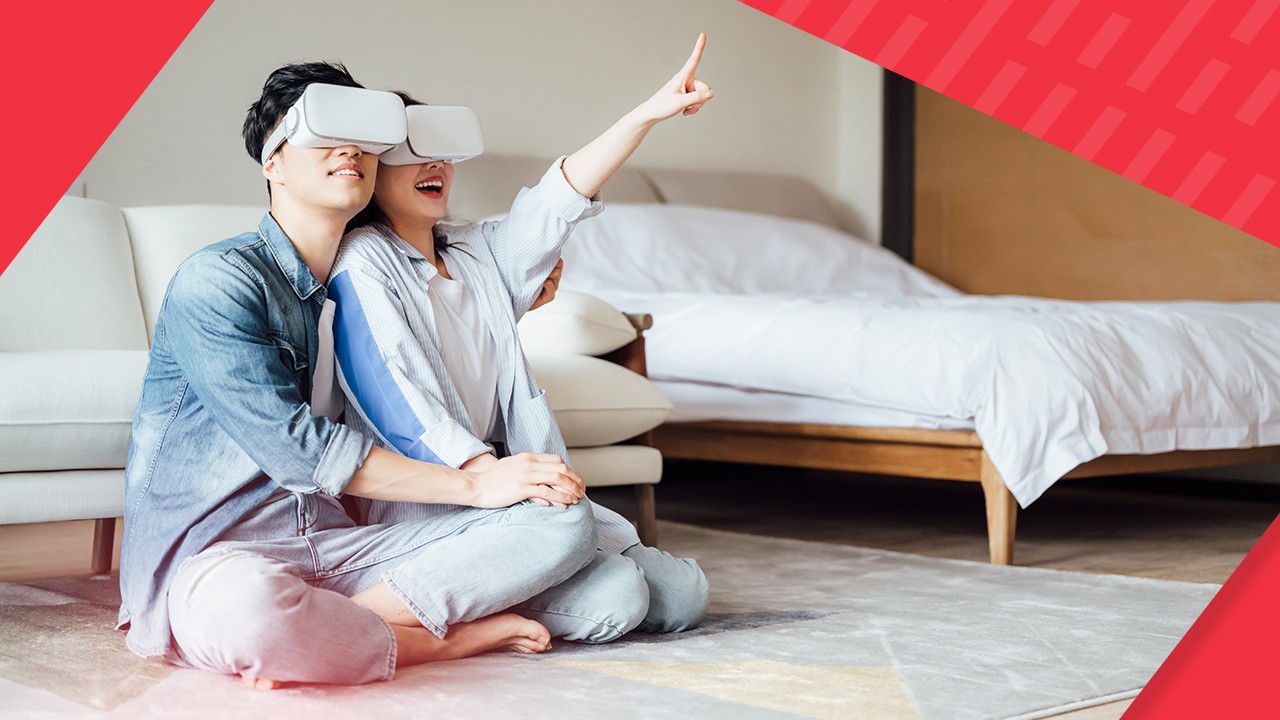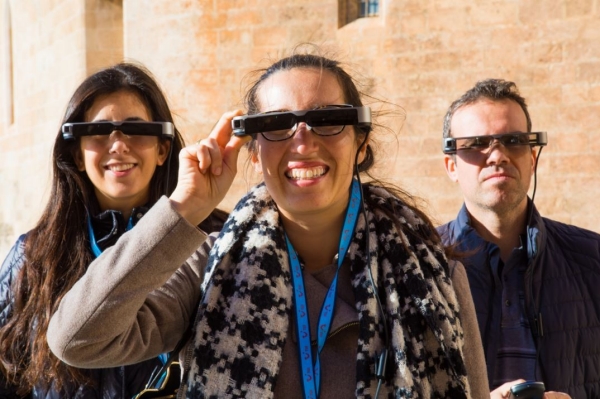6 min read
During the pandemic, many would-be travellers satiated their thirst for adventure with immersive experiences that could take them across the globe, all while sitting on their sofa. However, as many countries now begin to welcome back visitors, will immersive tech still have a place in the travel industry?
In this piece, we explore some of the common immersive technologies and how tourism companies from around the world have integrated these technologies into their services and offerings.
During the pandemic, many would-be travellers satiated their thirst for adventure with immersive experiences that could take them across the globe, all while sitting on their sofa.
However, as many countries now begin to welcome back visitors, will immersive tech still have a place in the travel industry?
Although real-life travel experiences will be able to happen again soon, tech savvy travel companies are coming up with innovative, new ways to incorporate immersive tech into their business strategy to attract a wider audience and gain a competitive edge.
In fact, immersive visitor experiences could complement physical products and offerings. Those that begin experimenting now may be prepared to integrate this new technology more readily into their services and offerings.
In this article we will focus on three of the most common immersive technologies:
Virtual Reality (VR): A technology that puts users into a fully immersive 360 degree experience with the help of a VR headset. It is often accompanied with hand sensors that allow the user to interact with the virtual environment.
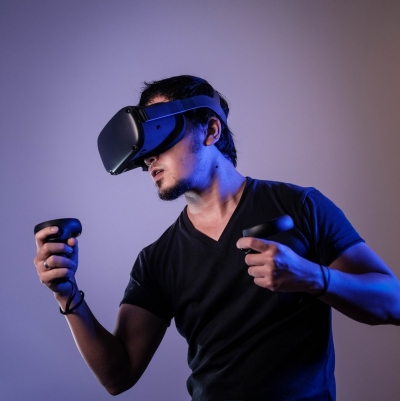
Augmented Reality (AR): With the help of smart glasses or a smartphone, 3D images can be projected into real world landscapes. The popular phone based app Pokemon Go is one example of this.
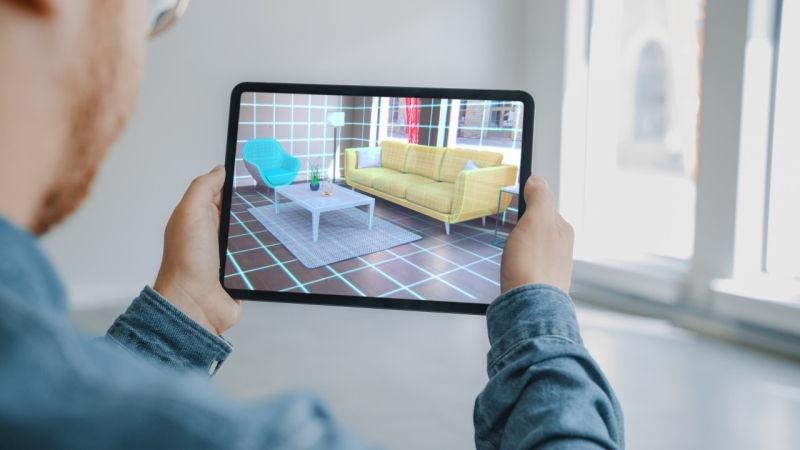
Holograms: This technology allows you to project virtual, 3D objects (and even people) into a physical space which can be seen by an audience without the need for headsets, phones or smart glasses.
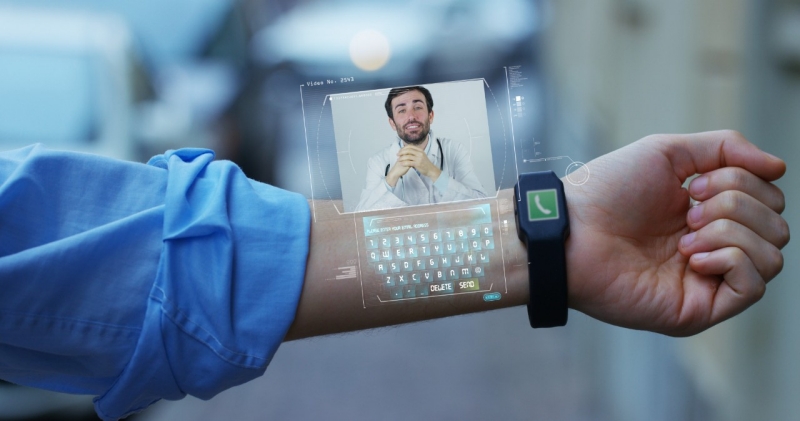
Now that we have defined these technologies, how are travel businesses using them to enhance their travel experiences and marketing strategies?
Try before you buy
During the pandemic, retail businesses adopted AR to give consumers a ‘try before you buy’ experience from home. From lipstick shades to furniture, shoppers could test out and see what products might look like before purchasing them. Now travel agencies are adopting the ‘try before you buy’ model in their marketing strategies to inspire would-be travellers.
Travel agent Kuoni created a virtual reality tour of the luxury Sandy Lane resort in Barbados on their website to entice customers. Instead of simply reading about amenities, reviews, and browsing through photos, potential guests can see what it’s like to walk into one of the rooms, take a trip to the spa, stroll through the golf courts and dive into the water virtually.
End to end travel agency, Heritage Collection Travel, introduced a VR experience at its physical location in York. When customers come in to plan their holiday, they’re invited to select their destination by experiencing it first in virtual reality. From getting a taste of the wildlife one might encounter at a Serengeti river crossing to hearing the sound of the waves as you stroll along the beach near an island based hotel, these simulations allow travel agents to inspire and personalise the booking experience for customers.
In an interview with the Guardian, Ralph Hollister, a tourism analyst at Global Data, believes that in the future we could see consumers selecting every aspect of their journey in virtual reality, from their plane seats to the activities and tours they will participate in when they arrive.
Going beyond physical barriers
During the pandemic, MICE travel agents embraced technology to continue hosting conferences and expos virtually. After this experience, we see these industry players continue to experiment with new tech to solve some of the biggest issues facing physical and hybrid events.
For example, Coex, a South Korean convention and exhibition hall, formed a partnership with NexTech AR Solutions to bring hologram and AR technology to their event space. With this technology, guests swipe a QR code at the entrance and are greeted by hologram based staff (both cutting costs and making social distancing easier). With this technology, virtual speakers
This technology also offers a more engaging option (than teleconference tools) for virtual speakers at hybrid events, giving them the freedom to move across the stage and interact with the audience in 3D alongside in-person speakers.
Another advantage of hologram technology is that it can help break down, not only physical, but also language barriers. For example, Microsoft’s hologram tech can automatically translate speech into different languages.
Meanwhile, AR technology is being used to allow visitors to view 3D simulations of products at scale. Imagine being able to view virtual cars at a carshow with the help of AR glasses, zooming in on tiny details and expanding out to see the bigger picture. This could help conference organisers save on time, shipping costs, and emissions, all while providing visitors with an even richer experience.
For example, NexTech’s platform even allows users to enter virtual vehicles and, if they like what they see, book a live test drive directly.
Tours & Activities businesses in particular have found VR and AR technology to be an exciting medium for both attracting and engaging visitors.
TUI Musement has been testing an augmented reality tour in Palma de Mallorca. Armed with stereoscopic augmented reality glasses and a controller, visitors can explore historic sites and view 3D models of what they may have once looked like. With just a tap of the controller, they can access further information about a particular site or object.
For example, when approaching the facade of the city’s historic cathedral, visitors can click a button on their smart glasses to get more information about its ornate entrance. When inside, they can click to get background information about various artworks and the lives of the artists behind them.
The great part about AR-based tours is that they’re self-paced and make social distancing possible.
VR can also be used to bring historical experiences to life. In 2017 TIME created a VR experience of the battle of Dunkirk. Rather than simply walking the beaches and viewing artefacts, users can be plunged into the action, seeing and hearing the sound of the battle through the eyes of a soldier.
National Geographic has been a pioneer in the area of VR travel. Two of their experiences include Antarctica and Machu Picchu. Rather than simply leaving users to explore on their own, these gamified experiences cast them as National Geographic photographers on a mission to snap photos of key sites for the magazine. These photos can then be shared on social media - generating user created marketing content and leads.
Immersive dining experiences
Food isn’t just about taste, it includes all senses including touch, sight, smell and sound. In fact, research shows that simply by altering the environment in which a meal is served, you can heighten a diners’ other senses and bring out specific flavours in each dish.
By offering diners, not just a meal, but a fully immersive culinary experience, restaurants can both distinguish themselves in a highly competitive market and increase revenue per customer.
For example, at Ibiza-based Sublimotion, two Michelin star Chef Paco Roncero serves diners in a multisensory room. A whole crew of lighting, sound and VR experts change the settings within the room as each dish is served. Imagine eating clams at the bottom of the ocean and being served desert via hot air balloons at a carnival. For some dishes, VR headsets are employed to project 3D images in front of the viewer. At an average of €1500 per person, Sublimotion is known as the most expensive dining experience in the world, but it continues to attract eager guests every year.
For hotels, attractions and tour companies, adding an experience like this to their ‘menu of services’ so to speak can attract new audiences (particularly foodies) and help upsell to current guests and customers.
For example, the Park Hyatt Bangkok introduced a 3D immersive culinary experience following the footsteps of Marco Polo. Rather than simply paying for a meal, diners are treated to a full 3D show including fire breathing dragons and a virtual chef guide who walks them through the inspiration for each dish.
Want to testbed an immersive tech solution for your business?
Tcube can help you get started in the following ways:
Connect with innovative, new startups in the space or get tips on how to successfully introduce a pilot through Tcube’s programmes. Indicate your interest by sharing your business objective with Tcube at innovation@stb.gov.sg.
If you are keen to embark on an island-wide Extended Reality experience, check out The Next Experience grant call which is now inviting Singapore-registered businesses to submit proposals.
Lastly, check out the Tourism Information & Services Hub (TIH) for 3D models available for your use. 3D models across various new categories will be added progressively to bring you inspiration on more ways to leverage immersive technologies. Do keep a lookout on the site!
***
We welcome you to share your story, feedback and content topics you would like us to cover. Please fill in the Tcube form for us to better understand your needs: https://go.gov.sg/tcubecommunity
© 2022 Singapore Tourism Board. All rights reserved. No part of this publication may be reproduced, distributed, stored in a retrieval system, or transmitted in any form or by any means without the prior written permission of STB or as otherwise permitted herein. STB makes no representation or warranty, express or implied, as to the accuracy or completeness of any information contained in this publication. STB, its members, officers, employees and any other persons acting under its direction, shall not be liable for any loss, injury or damage, whether direct or indirect, arising out of or in connection with the use of information in this publication.


